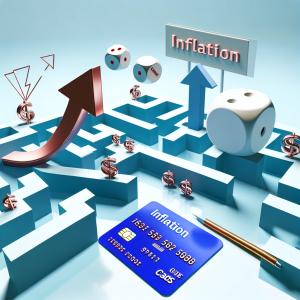Credit Card Interest Rates Hit New Highs—What Investors and Consumers Must Know Now
Credit card interest rates are climbing again, even as the Federal Reserve has paused its rate hikes and even cut rates three times in 2024. According to recent data from LendingTree and Bankrate, the average credit card APR has surged to just over 20%, with new card offers averaging a staggering 24.3%. This marks the highest level since December and the third consecutive month of increases. For consumers and investors alike, this trend signals deeper shifts in credit markets that demand careful attention and strategic action.
Why Are Credit Card Rates Rising Despite Fed Cuts?
At first glance, it seems counterintuitive. The Fed’s benchmark rate has been trimmed three times this year and held steady since December 2023, yet credit card issuers are still pushing interest rates upward. The key driver? Risk management.
Banks and card issuers are bracing for potential borrower defaults amid ongoing economic uncertainty. As LendingTree’s chief credit analyst Matt Schulz explains, lenders are proactively raising rates to shield themselves from the rising risk of nonpayment. This reflects a broader trend in the credit market where risk premiums are increasing, independent of the Fed’s benchmark rate.
TransUnion’s Charlie Wise adds another layer: uncertain economic conditions prompt consumers to seek new credit lines as a financial safety net, increasing demand and risk exposure for lenders. This dual dynamic—higher risk on both borrower and lender sides—is pushing APRs higher.
The Long-Term Trend: A Decade of Rising Credit Costs
Credit card rates have not always been this punishing. After the Credit CARD Act of 2009, rates remained relatively stable for years. But since the Fed began raising rates in 2015, credit card APRs have roughly doubled—from around 12% to today’s 20%+ range. The recent spike following 11 rate hikes starting March 2022 accelerated this trend dramatically.
This decade-long rise in borrowing costs signals a structural shift in consumer credit. For investors, this may indicate growing credit risk in consumer loan portfolios and potential impacts on sectors reliant on consumer spending.
What This Means for Consumers Carrying Balances
Consumers who carry monthly balances are feeling the brunt of these soaring rates. Even with potential future Fed rate cuts, relief may be minimal. As Wise points out, a 2 percentage point drop in the fed funds rate might only reduce APRs from 22% to 20%—a negligible difference for those struggling to pay down debt.
For those in this position, waiting for the Fed to cut rates is a risky strategy. Instead, actionable steps include:
- Balance Transfers: Moving debt to zero-interest or low-interest balance transfer cards can provide breathing room to pay down principal without accruing high interest.
- Debt Consolidation: Taking out a personal loan with a lower fixed rate to pay off high-interest credit card debt can reduce monthly payments and total interest costs.
- Credit Score Improvement: Maintaining on-time payments, keeping credit utilization below 30%, and avoiding new debt can improve credit scores and unlock better rates.
What Investors and Advisors Should Watch Next
For financial advisors and investors, these rising rates and the underlying risk dynamics highlight several critical considerations:
-
Credit Quality Monitoring: Investors in consumer credit markets or credit-sensitive sectors should closely monitor borrower credit quality. Rising APRs reflect higher risk premiums, suggesting potential for increased defaults if economic headwinds persist.
-
Portfolio Diversification: Advisors should consider diversifying portfolios away from high-risk consumer credit exposure and toward more resilient sectors or fixed-income instruments less sensitive to consumer credit cycles.
- Consumer Behavior Insights: As consumers seek new credit lines as a buffer, lenders may tighten underwriting standards. This could lead to reduced credit availability for riskier borrowers, impacting consumer spending patterns and sectors reliant on discretionary spending.
Unique Insight: The Hidden Impact on Millennials and Gen Z
A recent study by Experian reveals that Millennials and Gen Z consumers are disproportionately affected by rising credit card rates, with average APRs for these groups exceeding 25% on new cards. This demographic shift has long-term implications for credit markets and consumer behavior. Younger consumers may increasingly turn to alternative financing methods, such as buy-now-pay-later services or peer-to-peer lending, potentially disrupting traditional credit card models.
Final Takeaway: Empowerment Through Knowledge and Action
The key message for consumers and investors is that credit card interest rates are no longer just a reflection of Fed policy—they are a barometer of broader economic risk and lender caution. For consumers, proactive debt management and credit optimization are essential. For investors and advisors, understanding these credit market dynamics is crucial to navigating risk and identifying opportunities in a changing financial landscape.
Stay ahead by monitoring credit trends, advising clients on smart debt strategies, and adjusting investment portfolios to reflect evolving credit risks. The era of cheap credit is over—adaptation and vigilance will define success in this new environment.
Source: The Fed held interest rates steady, but credit card APRs keep going up

